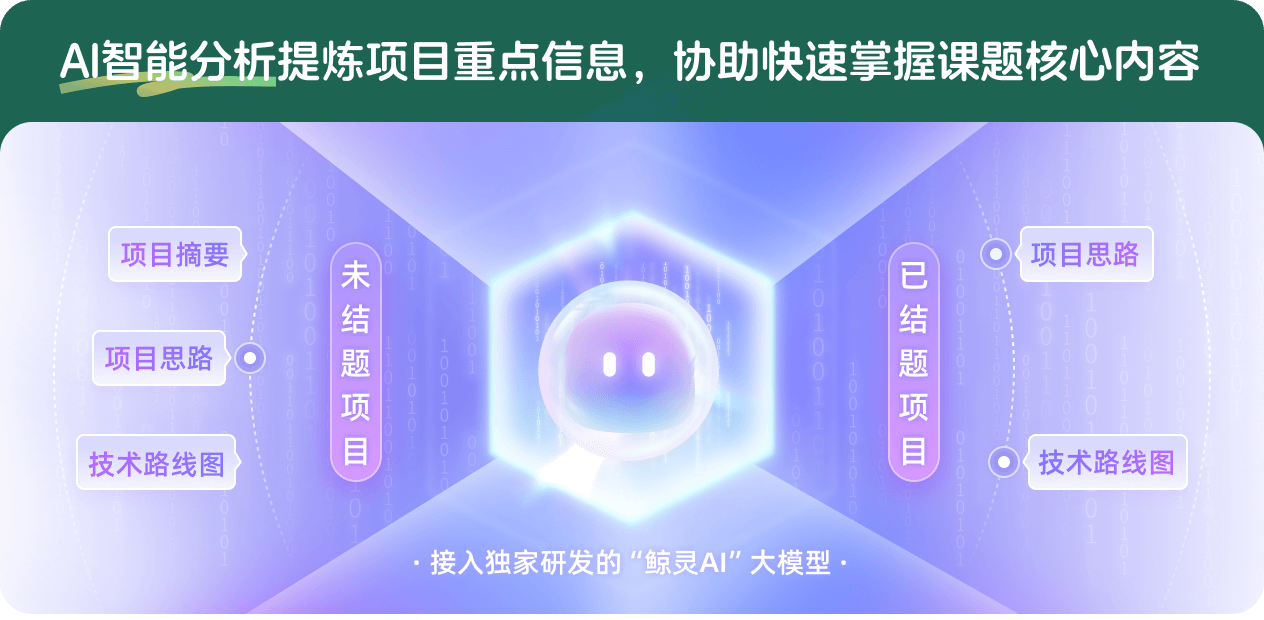切削可加工陶瓷多维耦合刀具磨损规律及相关机理研究
项目介绍
AI项目解读
基本信息
- 批准号:51275083
- 项目类别:面上项目
- 资助金额:74.0万
- 负责人:
- 依托单位:
- 学科分类:E0509.加工制造
- 结题年份:2016
- 批准年份:2012
- 项目状态:已结题
- 起止时间:2013-01-01 至2016-12-31
- 项目参与者:单泉; 王新刚; 杨建宇; 张金峰; 王超; 杨新院; 阎旭强;
- 关键词:
项目摘要
Rapid wear of the tool is the outstanding problems of the cutting of machinable ceramics. The key factors of tools wear are tool materials performance and cooling conditions. Current, theoretical research of parameter quantification related with them is lacking. Therefore, the study on tools wear models of multidimensional coupling in technical systems was proposed. In the model, based on the parameter quantification, all factors of technical systems are included, VB/V is a comprehensive evaluation function. So, it is closer to practical engineering. Multiple regression theory and gray clustering method will be applied to quantify parameters. Based on the Taylor Theorem and least-square regressive method, the multidimensional coupled tool wear law was studied in cutting machinable ceramics. These results can guide technical parameters decision-making of the complexity systems and solution tool rapid wear. Machinable ceramic's chip is powder (microscopic particles). It is the root causes of poor machining quality and rapid tool wear. And it is different of grinding engineering ceramics and metal's ribbon chips. Therefore, the chip formation mechanism of brittle fracture and massive collapse removal was proposed. The tools wear is due to high frequency impact loads and strong abrasive wear. By high-speed camera, SEM, TEM and energy spectrum analysis, we will observe the microstructure of machinable ceramics and tools, study chip formation mechanisms, micro-crack formation and growth mechanisms and tool wear mechanisms in the cutting process. These results can lay the foundation for machinable ceramics cutting theory.
刀具快速磨损是切削可加工陶瓷的突出问题,刀具性能、冷却条件是刀具磨损的关键因素,但目前缺乏二者定量表达理论研究。据此提出了更接近工程实际的工艺系统多维耦合刀具磨损模型,该模型以参数量化为前提,将工艺系统全要素考虑到模型之中,以VB/V作为综合评价指标。拟采用多元回归理论、灰色聚类法进行参数量化,基于Taylor定理和最小二乘多元回归法研究可加工陶瓷多维耦合刀具磨损规律。可为加工系统复杂工艺参数决策、刀具快速磨损问题的解决提供理论指导。可加工陶瓷切屑为粉末状(微观颗粒),这是加工质量差、刀具磨损快的根本原因,与工程陶瓷磨削及金属带状切屑均有区别。据此提出脆性断裂、块状崩除的成屑机制,而刀具磨损是受到高频冲击载荷和强磨粒磨损共同作用的结果。拟采用高速摄像、扫描电镜、透射电镜、能谱分析观察材料及刀具微观结构,研究其切削过程成屑、微裂纹形成与扩展、刀具磨损机制,为可加工陶瓷的切削理论研究奠定基础。
结项摘要
刀具快速磨损是切削可加工陶瓷的突出问题,项目针对可加工陶瓷切削机理、参数量化、刀具磨损多维耦合模型开展了相关研究工作。项目在切削实验的基础上,以可加工陶瓷材料断裂去除中的能量传递原理,分析了可加工陶瓷材料切削过程中的微观裂纹扩展中各个能量分项变化,提出了可加工陶瓷大规模挤裂、小规模挤裂的切削层去除机制。通过可加工陶瓷的磨削实验,提出了延性去除、延脆性去除、脆性去除三种材料去除模式,以延性域系数、延脆性域系数来构建延性-延脆性和延脆性-脆性两个临界磨削深度模型,从而更为准确的分析硬脆材料在加工成形中所处的阶段。根据可加工陶瓷试验,提出了复合磨削因子,并建立了表面粗糙度与复合磨削因子之间模型。以此来解释新表面形成机制、表面硬度机制、刀具磨损机制,以及切削力、切削温度的产生机制。.刀具磨损过程可以划分为初期磨损、稳定磨损和过度磨损三个阶段;切削可加工陶瓷时刀具磨损主要为刀尖磨损和后刀面磨损。磨损原因为磨料磨损、粘结磨损、刀具破损,刀具材料属性对刀具体积磨损影响最大。基于回归理论,建立了多个刀具磨损率一元模型;采用回归理论与遗传算法相结合,获得了多维耦合刀具磨损回归方程。确立了多维耦合刀具磨损模型,并与刀具磨损理论模型进行了比较,提出了切削可加工陶瓷刀具磨损率经验公式。以灰色聚类理论为基础,进行了特征参数提取,对刀具材料和被切削材料进行了参数量化研究。.分析了表面硬度和表面粗糙度随工艺参数的变化规律。基于PSO算法改进BP神经网络,利用最小二乘拟合,建立了表面粗糙度的多维耦合模型。建立了表面硬度关于工艺参数的一元模型,进一步根据正交实验,结合遗传算法和神经网络算法建立了多维耦合模型,以研究表面质量本身与工艺参数之间所存在的内在规律。利用PSO算法改进BP神经网络,再根据设置的粒子种群规模,进行了双目标优化,得到了一组最优工艺参数。.这些成果为可加工陶瓷的切削理论研究奠定基础。
项目成果
期刊论文数量(28)
专著数量(1)
科研奖励数量(0)
会议论文数量(1)
专利数量(0)
工程陶瓷磨削延脆转变临界条件的研究
- DOI:--
- 发表时间:2016
- 期刊:机械工程师
- 影响因子:--
- 作者:马廉洁;王华;田俊超;陈杰
- 通讯作者:陈杰
Study on surface roughness model and surface forming mechanism of ceramics in quick point grinding
陶瓷快速点磨削表面粗糙度模型及表面形成机理研究
- DOI:10.1016/j.ijmachtools.2013.11.001
- 发表时间:2014-02-01
- 期刊:INTERNATIONAL JOURNAL OF MACHINE TOOLS & MANUFACTURE
- 影响因子:14
- 作者:Ma, Lianjie;Gong, Yadong;Chen, Xiaohui
- 通讯作者:Chen, Xiaohui
Study on the Tribological Property of Bionic Lead Rail using ABAQUS
基于ABAQUS的仿生导轨摩擦学性能研究
- DOI:--
- 发表时间:2014
- 期刊:Advanced Materials Research
- 影响因子:--
- 作者:Lichen Gu;Yongzhen Luo;Fengwen Wang;Xiaohui Chen
- 通讯作者:Xiaohui Chen
基于PSO算法改进BP神经网络的氟金云母点磨削工艺参数优化
- DOI:--
- 发表时间:2016
- 期刊:中国机械工程
- 影响因子:--
- 作者:马廉洁;陈杰;巩亚东;王佳
- 通讯作者:王佳
Modeling and simulation of dynamical contact of asperities between flat rough surfaces
平坦粗糙表面之间凹凸动态接触的建模与仿真
- DOI:10.1177/1687814016673498
- 发表时间:2016-10
- 期刊:Advances in Mechanical Engineering
- 影响因子:2.1
- 作者:Tan, Yanqing;Zhang, Lianhong;Ma, Lianjie;Lv, Xiaoyong
- 通讯作者:Lv, Xiaoyong
数据更新时间:{{ journalArticles.updateTime }}
{{
item.title }}
{{ item.translation_title }}
- DOI:{{ item.doi || "--"}}
- 发表时间:{{ item.publish_year || "--" }}
- 期刊:{{ item.journal_name }}
- 影响因子:{{ item.factor || "--"}}
- 作者:{{ item.authors }}
- 通讯作者:{{ item.author }}
数据更新时间:{{ journalArticles.updateTime }}
{{ item.title }}
- 作者:{{ item.authors }}
数据更新时间:{{ monograph.updateTime }}
{{ item.title }}
- 作者:{{ item.authors }}
数据更新时间:{{ sciAawards.updateTime }}
{{ item.title }}
- 作者:{{ item.authors }}
数据更新时间:{{ conferencePapers.updateTime }}
{{ item.title }}
- 作者:{{ item.authors }}
数据更新时间:{{ patent.updateTime }}
其他文献
单晶高温合金微磨削中声发射机制及监测的研究
- DOI:--
- 发表时间:2020
- 期刊:中国工程机械学报
- 影响因子:--
- 作者:周云光;董彪;马廉洁;谭雁清;张力
- 通讯作者:张力
氧化锆陶瓷微尺度磨削表面质量试验研究
- DOI:--
- 发表时间:2022
- 期刊:东北大学学报(自然科学版)
- 影响因子:--
- 作者:周云光;田川川;马廉洁;毕长波
- 通讯作者:毕长波
氧化锆陶瓷车削刀具几何参数的多目标优化
- DOI:--
- 发表时间:2020
- 期刊:东北大学学报(自然科学版)
- 影响因子:--
- 作者:马廉洁;左宇辰;周云光;付海玲
- 通讯作者:付海玲
氟金云母表面形成机理及表面粗糙度理论模型
- DOI:--
- 发表时间:2020
- 期刊:中国机械工程
- 影响因子:--
- 作者:陈景强;马廉洁;孟博;周云光
- 通讯作者:周云光
其他文献
{{
item.title }}
{{ item.translation_title }}
- DOI:{{ item.doi || "--" }}
- 发表时间:{{ item.publish_year || "--"}}
- 期刊:{{ item.journal_name }}
- 影响因子:{{ item.factor || "--" }}
- 作者:{{ item.authors }}
- 通讯作者:{{ item.author }}

内容获取失败,请点击重试

查看分析示例
此项目为已结题,我已根据课题信息分析并撰写以下内容,帮您拓宽课题思路:
AI项目摘要
AI项目思路
AI技术路线图

请为本次AI项目解读的内容对您的实用性打分
非常不实用
非常实用
1
2
3
4
5
6
7
8
9
10
您认为此功能如何分析更能满足您的需求,请填写您的反馈:
马廉洁的其他基金
可加工陶瓷刀-件-屑耦合切削机理及车削力理论模型的研究
- 批准号:
- 批准年份:2019
- 资助金额:60 万元
- 项目类别:面上项目
相似国自然基金
{{ item.name }}
- 批准号:{{ item.ratify_no }}
- 批准年份:{{ item.approval_year }}
- 资助金额:{{ item.support_num }}
- 项目类别:{{ item.project_type }}
相似海外基金
{{
item.name }}
{{ item.translate_name }}
- 批准号:{{ item.ratify_no }}
- 财政年份:{{ item.approval_year }}
- 资助金额:{{ item.support_num }}
- 项目类别:{{ item.project_type }}




















